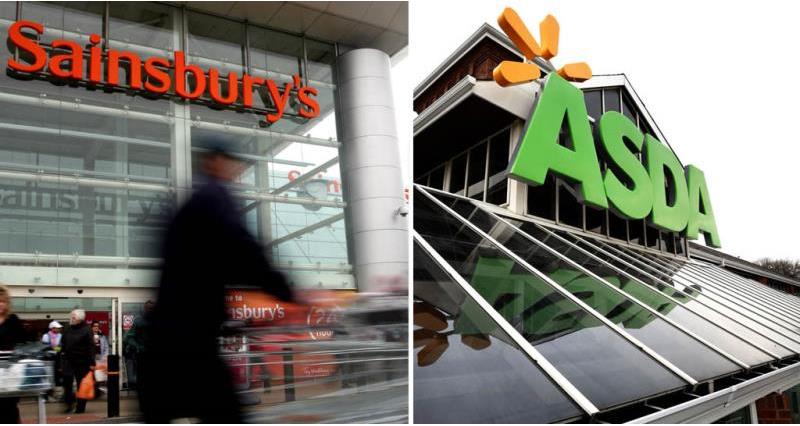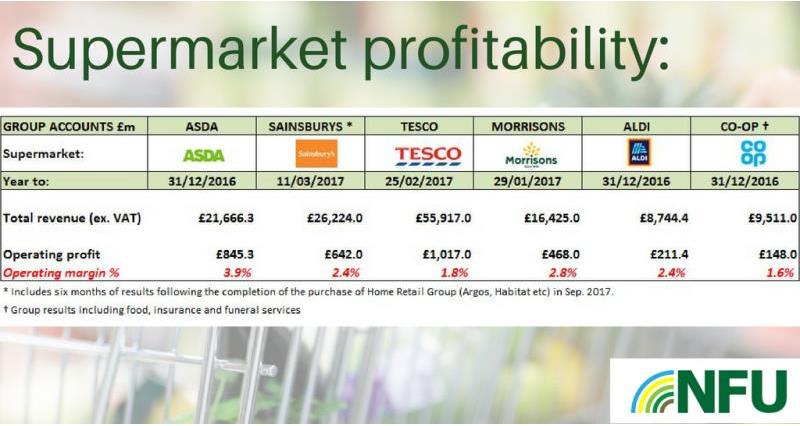Dr Andrew Francis, NFU chief economics adviser, takes a closer look at the proposed Sainsbury’s / Asda merger, how the NFU is involved and possible scenarios as the two supermarkets join forces to take on the discounters. He writes:
Clearly the news surprised investors, but following Tesco’s recent £4bn acquisition of the UK’s biggest wholesaler – Booker, the combination of Sainsbury’s and Asda was perhaps a deal waiting to happen.
Sainsbury’s purchase of Argos has also been a success, improving sales and online capability. And it will have no doubt stimulated some questions about who’s next to consolidate in this ever competitive market.
The NFU will be looking closely at the deal and how it progresses through the Competition and Markets Authority (CMA) regulatory hurdles. The NFU has already provided initial comment to the CMA and has expressed its views on how such a large merger could have on dominance in the supply chain and the potential implications for NFU members as food producers, associated competition and consumer interest.

In the meantime, the NFU has been undertaking some financial analysis of its own into the merger and the sector in general. The CMA’s interest is the consumer, and therefore the NFU’s focus will involve whether excessive demands on suppliers by the enlarged business will damage farmers’ ability to innovate and invest, which in turn will impact on choice and availability for shoppers.
So what does the combination of Sainsbury’s and Asda actually involve? For a start, Asda’s parent -the US giant Walmart (who paid £6.9bn for Asda back in 1999) will receive £3bn in cash from Sainsbury’s and will have a 42% stake in the new business through the issuing of new shares. To complicate things, Walmart will only have 30% of the voting rights due to the creation of new non-voting equity share capital.
The company’s main HQ will remain in Holborn, and there are no intentions to close Asda’s Leeds base, or combine the two brands into one. Asda achieves almost two-thirds of its sales outside London and the south-east of England, in contrast to Sainsbury’s, which has nearly 60% of its sales in these areas. The stock market value of the combined business is estimated at £12bn, ranking it at around 40th in the FTSE100.
The Sainsbury’s-Asda combination will create a business with an estimated 31.4% of the grocery market, with Tesco in second place at 27.6% and Morrisons third at 10.4% and Aldi, The Co-op and Lidl with 7.3%, 6% and 5.3% respectively.
The supermarket sector is one of very high turnover and very low margin. Looking at the latest accounts available, as shown in the table below, operating margins range from 3.9% at Asda to a meagre 1.6% at The Co-op.

Presumably, one of the reasons for the merger is to benefit from the economies of scale to gain an edge in a competitive sector. The combined business expects to make £500m in efficiency savings, capitalising on Walmart’s huge buying power and have a turnover of over £50bn.
Overall profitability in the new group will improve due to lower levels of overall indebtedness (gearing) of the combined entity. Surprisingly, there are no store closures planned, although the CMA may disagree. There are no planned job cuts from a combined business which will employ 295,000people and have an estate of over 2,000 stores.
In order to understand what this merger means for NFU members, the NFU plans to conduct a full analysis of the merger prior to submitting its findings to the CMA investigation.
